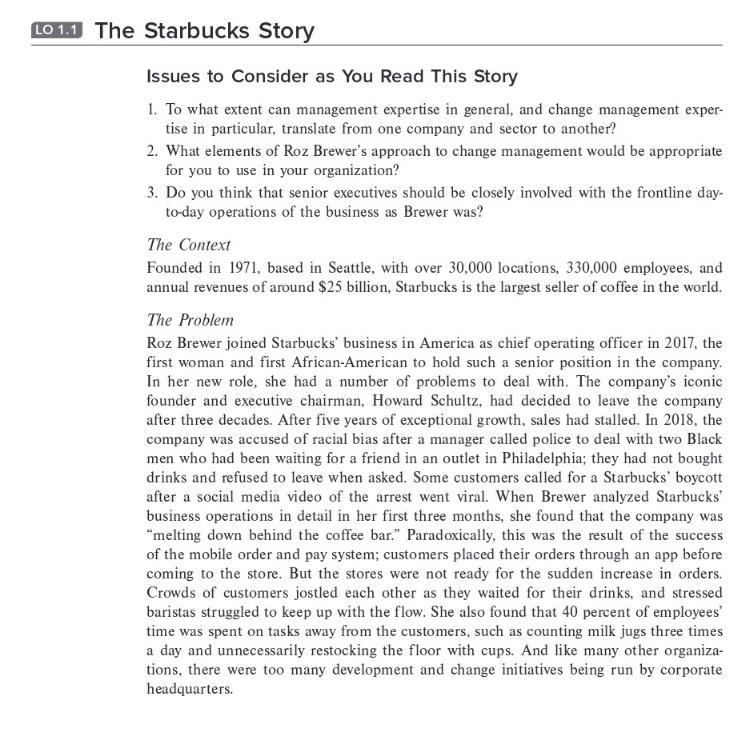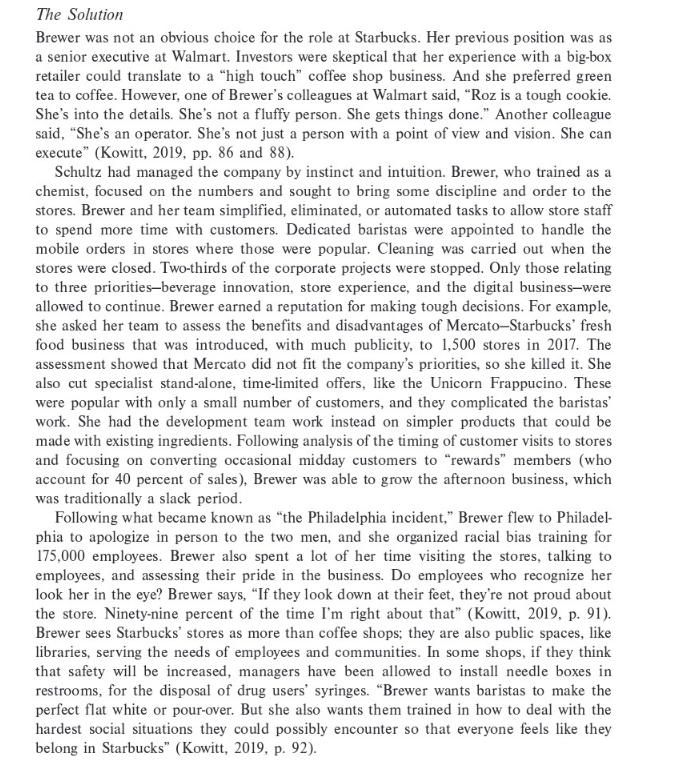Answered step by step
Verified Expert Solution
Question
1 Approved Answer
Reflect on an important organizational change that you have experienced and compare your organizational change story to the Starbucks change story below and explain the
Reflect on an important organizational change that you have experienced and compare your organizational change story to the Starbucks change story below and explain the following:
(a) Explain your organizational change story and compare to the Starbucks story and,
(b) Explain the common issues and lessons present in both stories,
(c) Explain how you might use the lessons as a solutions template during future change strategies.
(a) Explain your organizational change story and compare to the Starbucks story and,
(b) Explain the common issues and lessons present in both stories,
(c) Explain how you might use the lessons as a solutions template during future change strategies.



LO 1.1 The Starbucks Story Issues to Consider as You Read This Story 1. To what extent can management expertise in general, and change management exper- tise in particular, translate from one company and sector to another? 2. What elements of Roz Brewer's approach to change management would be appropriate for you to use in your organization? 3. Do you think that senior executives should be closely involved with the frontline day- to-day operations of the business as Brewer was? The Context Founded in 1971, based in Seattle, with over 30,000 locations, 330,000 employees, and annual revenues of around $25 billion, Starbucks is the largest seller of coffee in the world. The Problem Roz Brewer joined Starbucks' business in America as chief operating officer in 2017, the first woman and first African-American to hold such a senior position in the company. In her new role, she had a number of problems to deal with. The company's iconic founder and executive chairman, Howard Schultz, had decided to leave the company after three decades. After five years of exceptional growth, sales had stalled. In 2018, the company was accused of racial bias after a manager called police to deal with two Black men who had been waiting for a friend in an outlet in Philadelphia; they had not bought drinks and refused to leave when asked. Some customers called for a Starbucks' boycott after a social media video of the arrest went viral. When Brewer analyzed Starbucks' business operations in detail in her first three months, she found that the company was "melting down behind the coffee bar." Paradoxically, this was the result of the success of the mobile order and pay system; customers placed their orders through an app before coming to the store. But the stores were not ready for the sudden increase in orders. Crowds of customers jostled each other as they waited for their drinks, and stressed baristas struggled to keep up with the flow. She also found that 40 percent of employees' time was spent on tasks away from the customers, such as counting milk jugs three times a day and unnecessarily restocking the floor with cups. And like many other organiza- tions, there were too many development and change initiatives being run by corporate headquarters.
Step by Step Solution
There are 3 Steps involved in it
Step: 1

Get Instant Access to Expert-Tailored Solutions
See step-by-step solutions with expert insights and AI powered tools for academic success
Step: 2

Step: 3

Ace Your Homework with AI
Get the answers you need in no time with our AI-driven, step-by-step assistance
Get Started


